- Home
- Michael Korda
Hero Page 21
Hero Read online
Page 21
He had persuaded Hogarth to write a letter of introduction to C. M. Doughty, who was to become another of Lawrence’s father figures, and now it bore fruit. The meeting between Lawrence and the old man was a success, and, in Hogarth’s words, “in no way diminished the disciple’s fervor.” In fact it served to increase Lawrence’s determination to follow in Doughty’s footsteps.
Lawrence did not seem to have had any doubts about his thesis, except for the fear that it might be too ambitious and too long for the examiners. Indeed, the material in it was so new and challenging that there was at first some doubt that anybody at Oxford was competent to judge it. In the event, Lawrence “took a most brilliant First Class,” according to his crammer L. C. Jane, so brilliant that Lawrence’s tutor gave a dinner party to the examiners to celebrate the achievement. This rare, and possibly unique, event in Oxford demonstrates the respect in which Lawrence was held, despite doubt that he was “a natural scholar.”
Afterward, Lawrence set off on a cycling tour in France with his brother Frank, who appears not to have shared Ned’s interest in castles and fortifications. Ned wrote to his mother that he was busy reading Petit Jehan de Saintré, “a xv Cent. Novel of knightly manners,” of which he had been trying to find a well-printed copy, as well as the work of “Molière & Racine & Corneille & Voltaire,” an ambitious reading program for somebody bicycling almost fifty miles a day. He pauses to explain to his mother his passion for reading, and for beautiful books. “Father won’t know all this—but if you can get the right book at the right time you taste joys—not only bodily, physical, but spiritual also, which pass one out above and beyond one’s miserable self, as it were through a huge air, following the light of another man’s thought. And you can never be quite the old self again.”
What Sarah made of all this is hard to know—as so often with Lawrence’s letters home, it reads as if he were trying out ideas and phrases that he intended to develop, refine, and use later, perhaps in this case for a letter to his friend Vyvyan Richards, who still expected Lawrence to join him in the hand-printing venture; or perhaps Lawrence was merely trying to persuade his mother that the plan for printing books with Richards was a better one than his father thought.
On his return to Oxford Lawrence was persuaded by C. F. Bell to go for a bachelor of literature (BLitt) degree as the next rung up on the academic ladder, his subject to be “Mediaeval Lead-Glazed Pottery from the Eleventh to the Sixteenth Centuries.” Although he twice failed to win “a research fellowship” at All Souls College, he managed to get a grant of £50 from Jesus College, but one senses that his heart was not really in the problems of lead-glazed pottery, however much they fascinated Bell.
Even though he left immediately for Rouen, to look “at mediaeval pots,” Lawrence also dropped what must have been a bombshell for his friend E. T. Leeds and for Bell, who had envisioned him safely seated at a desk in the Ashmolean Museum in Oxford, examining potsherds on his return from France. “Mr. Hogarth is going digging, and I am going out to Syria in a fortnight to make plain the valleys and level the mountains for his feet:—also to learn Arabic,” he informed them. “The two occupations fit into one another splendidly.”
“The dangerous crises of self-development are permitted to come to pass under the protecting eye of an experienced initiate … who then enacts the role and character of the ancient mystagogue, or guide of souls,” wrote Joseph Campbell in analyzing the development of the hero, and the need, at the crucial stages of the hero’s life, for a wise, firm, and knowing mentor—one who sets the apprentice hero on the correct path and furnishes him with the knowledge and the weapons he will need, and who, above all, points to the great task that lies at the end of the many trials and terrors.
Nobody would have been more familiar with the role Merlin played in the life of King Arthur than Lawrence, whose appetite for medieval romance, myth, and poetry was voracious, and who would carry Sir Thomas Malory’s Le Morte d’Arthur into battle with him. Henceforth, Hogarth would play that role in Lawrence’s life.
In the meantime, it is clear, Lawrence was delighted to be freed from the pottery fragments in the Ashmolean, and sent to Syria. He sailed on December 10, 1909, for Beirut, and what would be the happiest years of his life.
* A typical case of the latter kind was the dislike between the future poet laureate and television celebrity John Betjeman and his tutor at Magdalen College, C. S. Lewis, author of, among other things, The Narnia Chronicles. Lewis called Betjeman an “idle prig” and was instrumental in sending him down, and Betjeman later described Lewis as arid, unsympathetic, and uninspiring, and blamed his failure at oxford on Lewis.
* At Bexleyheath, south of London.
* This may not have been true, however, on Clare’s part, to Lawrence’s great embarrassment.
* Although Graves too was an oxonian, there is some doubt that he got this right. Mark Blandford-Baker, the home bursar of Magdalen College, oxford, points out, “Balliol is surrounded by trinity plus a bit of St. John’s.” Lawrence may have been pulling Graves’s leg.
* Lawrence is fairly specific about this, though he seems to have carried several different kinds of pistols over the years. if his reference to the Mauser is true, then it is exactly the same kind of pistol which the young Winston Churchill carried when he charged with the twenty-First Lancers at the Battle of omdurman in the Sudan, Kitchener’s great victory, in 1898, and with which he shot several Mahdist tribesmen.
† he was created marquess of Curzon in 1921.
* This pretty much confirms that the pistol he carried was a Mauser C96–no other pistol had adjustable sights calibrated for up to 1,000 meters, which made sense because the pistol could be carried in a wooden holster that clipped to the butt serving as a stock, thus allowing it to be fired like a carbine. it was, however, a bulky and heavy weapon, not easily concealable, and would seem to prove that Lawrence must have carried more than what he could stuff into his pockets.
* In the Lowell Thomas version the pistol becomes a Colt.45 Peacemaker, which the robber doesn’t realize has to be cocked with the thumb before firing; but this may be a sop to American readers–Lawrence clearly identifies it as a Mauser.
CHAPTER FIVE
Carchemish: 1911–1914
We travel not for trafficking alone:
By hotter winds our fiery hearts are fanned.
—James Elroy Flecker, “The Golden Journey to Samarkand”
David Hogarth, though he seems to have had a gift for remaining in the background, was one of those figures beloved in English popular fiction: the superbly well-connected don; a scholar who was also an intrepid traveler and “a man of action"; an Englishman who could speak French, German, Italian, Greek, Turkish, and Arabic fluently, and who was just as at ease negotiating with foreign governments and institutions as he was with those of his own country. Though married, and the father of a son, Hogarth was apparently not an enthusiast for domestic life; he was an inveterate and intrepid traveler, as well as a learned, witty, acerbic man, as much at home in high society as he was in the desert, a brilliant conversationalist in all his languages, and “respected throughout Europe” as well as in much of the Middle East. It comes as no surprise to learn that Hogarth and Sir Edward Grey, the British foreign secretary from 1905 to 1916, were at Winchester together and had remained in constant touch since their schooldays there.
When Lawrence went up to Jesus College in 1907 as an undergraduate, he was nineteen and Hogarth was forty-five and already a man of considerable accomplishments: a fellow of Magdalen College, he was the author of several well-received books; he had taken part in archaeological expeditions in Egypt, Crete, and Asia Minor; he had been director of the British School of Archaeology in Athens (an extremely prestigious post); he had served as a war correspondent for the Times during the 1897 revolution in Crete and the Greco-Turkish War—a hint that there was more to Hogarth’s life than archaeology—and he would become keeper of the Ashmolean Museum in Oxford in 1909.
Hogarth was one of those people who knew everybody worth knowing, and was welcome everywhere. A big, burly, sociable, broad-shouldered man, with a neatly trimmed beard, unusually long, powerful arms, and a dark, penetrating gaze, he was described by a woman who met him at a party as resembling “a cynical and highly-educated baboon.” In rare photographs of himself and Lawrence together, he towers over Lawrence by a head. A member of what has come to be called in Britain the Establishment,* he was also an academic talent spotter, and the first to recognize in the young Lawrence the same quickness of mind, biting sense of humor, and sharp intellectual curiosity that had brought the young Hogarth himself a brilliant “First.” He described Lawrence in a letter to Charles M. Doughty, the great explorer of Arabia, as “a boy of extraordinary aptitude both for archaeology and a wandering life among the Arabs.” With great patience and tact he shaped the younger man’s career, almost always as a presence in the background, sometimes without Lawrence’s even being aware of it. As early as 1909, Hogarth remarked to E. T. Leeds, one of his archaeological assistants at the Ashmolean, about Lawrence, who was then just back from his first visit to the Middle East: “That’s a rather remarkable young man: he has been in parts rarely visited by Western travelers in recent years.”
Perhaps inevitably, Hogarth has been treated as a kind of Edwardianequivalent of John Le Carré's spymaster George Smiley by some of Lawrence’s biographers, as if he had recruited his young protégé for Britain’s secret service while Ned was still bicycling in a schoolboy’s shorts over to the Ashmolean with his finds, but this is to overemphasize that side of Hogarth’s life, as well as to underestimate Lawrence’s lifelong aversion to moving to anybody’s pace or orders but his own. Still, Hogarth was certainly one of that informal circle of learned and adventurous men and women who passed information on to the government, in his case about the Balkans and the Near East, though he was not by any stretch of the imagination a spymaster who recruited and trained undergraduates. In the days before World War I, professional spies were employed by the continental powers against one another, but the British, particularly in the far reaches of the empire, relied on an informal and above all amateur web of explorers, archaeologists, adventurous businessmen, and travel writers for information. Given the secretive nature of the Ottoman Empire and its increasingly feeble hold over large areas of its territory, British explorers, adventurers, archaeologists, students of religion, and Arabists proliferated in the great empty spaces of Syria and Arabia, to the alarm of the French, who themselves had designs on Lebanon and Syria; and it would have been unlikely for some of these people not to have gathered such information as they could for friends in the government and the diplomatic service, without feeling that they were, in any organized way, “spying.”
Certainly Hogarth encouraged the young Lawrence to combine his interest in the Middle East with his passion for archaeology; and Hogarth may also have been sensitive enough to guess that Lawrence would benefit from a long period away from home and away from the pressures placed on him there by his mother. Not that Lawrence would necessarily have confided all this to Hogarth, however sympathetic a listener he was, but there was no need for him to; Hogarth, Lawrence would later write, was “the only man I had never to let into my confidence—he would get there naturally.”
While Lawrence was finishing his research in Rouen, Hogarth had just returned from Turkey, where he had been discussing with the Ottoman authorities British interest in the ruins of the ancient Hittite city of Carchemish, then a mound of rubble covered by sand, dirt, and the debris of later cities overlooking the Euphrates near Jerablus. The Hittites—unlike the ancient Egyptians—were an archaeological problem of great importance to scholars because there were few excavated Hittite sites and their language remained undeciphered. The Hittites had lived in a broad, crescent-shaped area of Anatolia and northern Syria, stretching as far to the south along the Mediterranean as modern Lebanon and as far to the east as the border of modern Iraq. The history of their kingdom began about 1750 BCE and came to an end about 1160 BCE, when internal strife, and warfare with the Egyptians to the south and the Assyrians to the east, brought about the collapse of what had once been a great empire. The British had a great interest in the Hittites, in part because dazzling new discoveries of whole cities seemed likely to be made in the area (in contrast to what was now the patient, painstaking excavation of Egyptian tombs), and in part because here, as elsewhere, rivalry between Britain and Germany played a major role. Hugo Winckler’s discoveries at Bogazköy in Anatolia in 1906–1907 had put the “Hittite problem” on the map—until then there was some doubt that the Hittites had ever existed—and it now became an urgent matter of academic prestige for the archaeology department of Oxford and the British Museum in London not to lag behind the University of Berlin. The British had known about the mound at Jerablus since the eighteenth century, and had made several attempts to dig there, revealing the presence of immense ancient ruins buried under the shattered remains of a Greek and a later Roman city. But these excavations were being made in what one archaeologist described as “a dreary and desolate waste” in the Syrian desert north of Aleppo, and between that desolation and the difficulties raised by the hostile local inhabitants and the Turkish authorities, work did not progress swiftly. Now, doubts in the British archaeological world that the Hittites had existed gave way to the conviction that the mound at Jerablus was of greater importance than the one Winckler was working on at Bogazköy, and must be excavated systematically as soon as possible. Hogarth, with his knowledge of Turkish, Arabic, and the area, was naturally an enthusiast for a project that combined patriotism and scientific knowledge. He had already visited the site in 1908, and pronounced favorably on it to the British Museum, which had applied for permission to dig there to the Imperial Ottoman Museum in Constantinople; authorities there let the matter rest for two years, owing to civil unrest, rebellion, and the overthrow of the sultan.
In 1910, after Turkey had settled down in the firmer hands of the “Young Turks,” the British ambassador in Constantinople was asked to raise the matter again, and this time, permission was granted. Hogarth’s choice of Lawrence was a natural one. Lawrence had clearly demonstrated a flair for digging up relics of the past, as well as for bargaining for them; he had bought a number of Hittite seals for Hogarth during his walking tour of the Holy Land; he was physically tough and fearless; he had a smattering of Arabic; he was a keen amateur photographer; and he had actually come very close to Carchemish while he was in Syria. Lawrence himself, when he heard about Hogarth’s trip to Constantinople in 1910, had asked his old friend E. T. Leeds, at the Ashmolean, if there was any chance of his being included in the party going to Jerablus with Hogarth.
This raised any number of difficulties, since Lawrence was receiving a scholarship from Jesus College to support his research on medieval pottery for a BLitt degree, which, on the face of things, seemed incompatible with excavating a Hittite site in Syria. But despite Leeds’s doubts, Lawrence demonstrated his lifelong ability to get his own way. Hogarth agreed to take Lawrence, and then, with superb diplomatic skill, managed to secure for his young protégé a “senior demyship,” a kind of research fellowship, at his own college, Magdalen,* which meant that the British Museum would not have to pay anything but Lawrence’s living expenses at thesite. This was not an inconsiderable feat—Lawrence’s demyship would bring him £100 a year for four years (about the equivalent of $12,500 a year today).
With equal skill Jesus College was placated by the suggestion that Lawrence would not only continue his research on medieval pottery but extend his survey of crusader castles in Syria, enabling him to expand his BA thesis into a book; and the British Museum was informed (a little optimistically) that his services were necessary to the expedition because of his command of Arabic, his familiarity with the area, and his knowledge about pottery. All this was the academic equivalent of a carom shot at billiards, and speaks volumes about Hogarth’s talent for manipulation, and L
awrence’s ability to claim convincingly many different skills at the same time. If Lawrence’s parents had any doubts, Hogarth no doubt dealt with those as well—he seems to have gotten along well with both of them—and moved swiftly to send Lawrence to Syria to improve his Arabic, for which so much had been claimed.
Lawrence sailed for Beirut at the beginning of December 1910, hardly more than two months after Hogarth’s return from Constantinople, leaving in his father’s hands the problem of the printing press that Vyvyan Richards and Lawrence were to have founded together. On the way to Beirut, Lawrence managed to visit Athens and Constantinople for the first time. Like many visitors to Greece, he was puzzled by how little the modern Greeks resembled the ancient ones, and compared the former unfavorably with the latter. The voyage, Lawrence complained, was very slow, and the meals were huge and endless (it was a French ship, of the Messageries Maritimes).

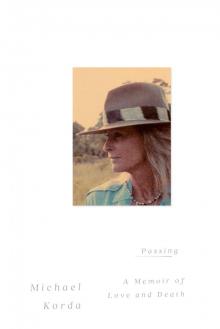 Passing
Passing Another Life
Another Life Clouds of Glory
Clouds of Glory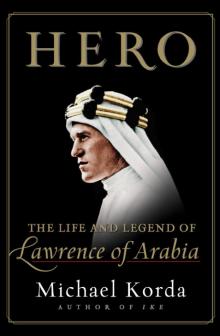 Hero: The Life and Legend of Lawrence of Arabia
Hero: The Life and Legend of Lawrence of Arabia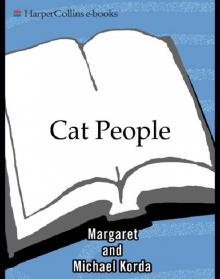 Cat People
Cat People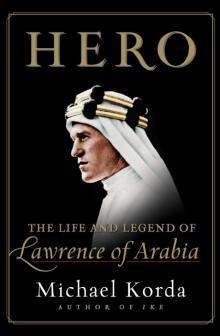 Hero
Hero With Wings Like Eagles: A History of the Battle of Britain
With Wings Like Eagles: A History of the Battle of Britain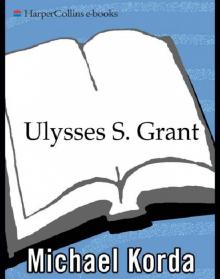 Ulysses S. Grant
Ulysses S. Grant